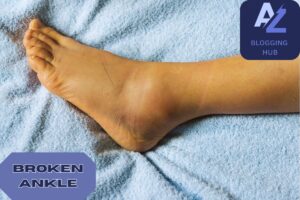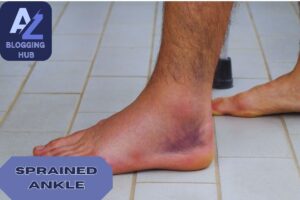How to Tell the Difference Between Sprain and Broken Ankle
Ankle injuries are common, whether you’re an athlete, a weekend warrior, or just going about daily activities. However, knowing whether you have a sprained ankle or a broken ankle can be tricky because they share many symptoms. Understanding the difference is crucial for proper treatment and recovery. In this article, we’ll dive deep into how to tell the difference between a sprain and a broken ankle, providing you with clear, practical information.
Understanding the Basics: Sprain vs. Broken Ankle
What is an Ankle Sprain?
An ankle sprain occurs when the ligaments that connect the bones in your ankle are stretched or torn. Ligaments are rugged bands of tissue that hold your ankle bones together and stabilize the joint. Sprains typically happen when you roll, twist, or awkwardly turn your ankle.
What is a Broken Ankle?
A broken ankle, also known as an ankle fracture, involves a break or crack in one or more bones that make up the ankle joint. These bones include the tibia (the more prominent lower leg bone), the fibula (the smaller lower leg bone), and the talus (the small bone between the heel bone and the tibia and fibula).
Broken Ankle vs Sprained Ankle Pictures
Visual Differences
Seeing pictures of broken ankle swelling and pictures of sprained ankles can help you understand the visual differences. Typically, a fractured ankle will appear more swollen, with possible deformities, compared to a sprained ankle, which might look bruised and swollen without unnatural bends.


What Does a Broken Ankle Look Like?
Signs and Symptoms
A broken ankle usually has more severe symptoms, including:
- Inability to bear weight: You likely won’t be able to put any weight on the ankle immediately after the injury.
- Severe pain: The pain is usually intense and can be accompanied by numbness.
- Immediate and obvious swelling and bruising: Swelling and bruising appear quickly and are often severe.
- Deformity: The ankle may look misshapen or have a bone protruding through the skin in severe cases.
How to Tell if Your Ankle is Broken
Diagnostic Steps
If you suspect a broken ankle, it’s essential to get an accurate diagnosis:
- Stop and Assess: If you hurt your ankle, stop what you’re doing immediately. Continuing to put weight on a potentially injured ankle can cause more damage.
- Use the RICE Method: The RICE method (Rest, Ice, Compression, Elevation) is a simple, effective way to manage initial pain and swelling.
- Evaluate Your Symptoms: Use the symptoms outlined above to get a preliminary idea.
- Seek Medical Attention: Visit a healthcare professional. They can perform a physical examination and may order imaging tests, such as X-rays or CT scans, to make an accurate diagnosis.
Pictures of Broken Ankle Swelling
What to Look For
Viewing pictures of broken ankle swelling can provide a visual guide. A broken ankle typically exhibits significant swelling, sometimes to the point of deformity, and can include severe bruising.
How to Tell if Ankle is Broken Without X-Ray
Physical Examination
While an X-ray is the definitive way to diagnose a broken ankle, there are signs you can look for without one:
- Inability to bear weight
- Severe and sharp pain
- Visible deformity or protruding bone
- Immediate and severe swelling
However, it’s important to see a doctor for an accurate diagnosis.
What Does a Sprained Ankle Look Like?
Typical Symptoms
A sprained ankle typically has:
- Mild-to-moderate pain: Pain that might develop immediately or after a few hours.
- Swelling and bruising: This develops over time, not as quickly as with a fracture.
- Instability: The ankle might feel wobbly or unstable.
Broken Ankle Recovery Time
Healing Process
The recovery time for a broken ankle can vary depending on the severity:
- Mild fractures: May take 6-8 weeks to heal.
- Severe fractures: Could require surgery and a longer recovery period, potentially 12 weeks or more.
Can You Bear Weight on a Broken Ankle?
Weight Bearing and Mobility
In most cases, you cannot bear weight on a broken ankle immediately after the injury. Doing so can cause further damage and delay healing. Using crutches or a wheelchair might be necessary.
Step-by-Step Guide: What to Do if You Suspect an Ankle Injury
- Stop and Assess:
If you hurt your ankle, stop what you’re doing immediately. Continuing to put weight on a potentially injured ankle can cause more damage. - Use the RICE Method:
Rest: Avoid putting weight on the injured ankle.
Ice: Apply ice packs to the ankle for 20 minutes every 2-3 hours.
Compression: Use an elastic bandage to wrap the ankle snugly, but not too tight.
Elevation: Keep your ankle raised above heart level to reduce swelling. - Evaluate Your Symptoms:
Use the symptoms outlined above to get a preliminary idea of whether you might have a sprain or a fracture. If the pain is severe, you’re unable to bear weight, or there’s noticeable deformity, it’s more likely to be a fracture. - Seek Medical Attention:
The best way to determine whether you have a sprain or a broken ankle is to visit a healthcare professional. They can perform a physical examination and may order imaging tests, such as X-rays or CT scans, to make an accurate diagnosis.
Anecdotes: Real-Life Stories
Sarah’s Story: A Weekend Hike Gone Wrong:
An avid hiker, Sarah once twisted her ankle during a weekend hike. She felt a sharp pain but continued walking, assuming it was just a minor sprain. The next day, her ankle was swollen and bruised, and she couldn’t put any weight on it—a visit to the doctor and an X-ray confirmed a fracture. Sarah’s experience underscores the importance of seeking medical attention immediately after an injury to prevent further damage.
John’s Experience: Basketball Injury
A basketball player, John, landed awkwardly on his ankle during a game. He felt a pop and intense pain, followed by swelling. Remembering the advice about how to tell if your ankle is broken, he didn’t try to walk on it. At the hospital, an X-ray revealed a severe sprain, not a fracture. John’s quick response and proper care helped him recover faster.
How to Properly Treat a Sprain or Broken Ankle
Treating a Sprained Ankle
- Rest: Avoid putting weight on the injured ankle.
- Ice: Apply ice packs to the ankle for 20 minutes every 2-3 hours.
- Compression: Use an elastic bandage to wrap the ankle snugly but not too tight.
- Elevation: Keep your ankle raised above heart level to reduce swelling.
- Use a brace or support: An ankle brace can provide stability and prevent further injury.
- Gradually resume activity: Once the swelling and pain subside, slowly start using your ankle again, but avoid high-impact activities until fully healed.
Treating a Broken Ankle
Treating a broken ankle usually requires more intensive care:
- Immobilization: A doctor may set the bone and use a cast or splint to keep it in place.
- Surgery: Severe fractures may need surgical intervention to insert pins, plates, or screws.
- Physical therapy: After the bone heals, physical therapy helps restore strength and flexibility.
- Follow-up care: Regular check-ups with your doctor ensure the ankle is healing properly.
The Importance of Proper Diagnosis and Treatment
Ignoring an ankle injury can lead to long-term complications, such as chronic pain, instability, and even arthritis. Proper diagnosis and treatment are crucial for full recovery. At Arlington/Mansfield Foot & Ankle Centers, our experienced team can help you determine whether you have a sprain or a broken ankle and provide the appropriate care to get you back on your feet.
Conclusion
Knowing the difference between a sprain and a broken ankle is essential for anyone who leads an active lifestyle. Understanding the symptoms and seeking timely medical attention can ensure a swift and complete recovery. Remember, it’s always best to consult with a healthcare professional to get an accurate diagnosis and treatment plan when in doubt. Don’t let an ankle injury keep you down—get the care you need and get back to doing what you love with confidence.



